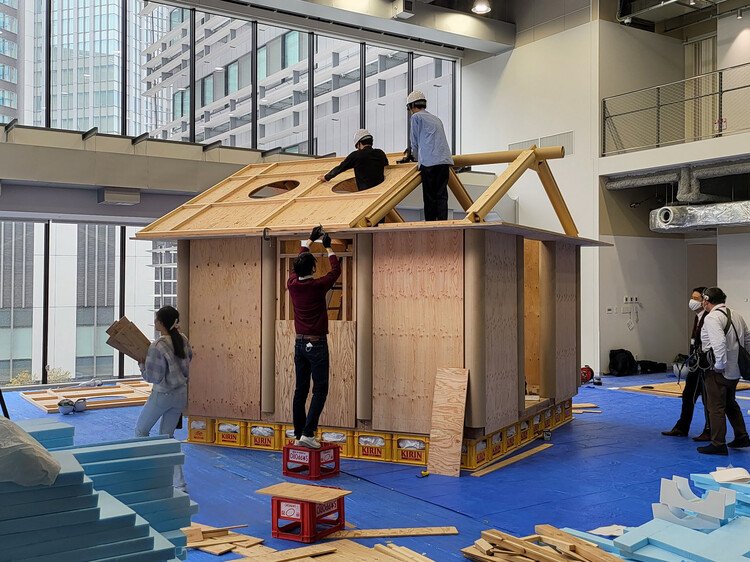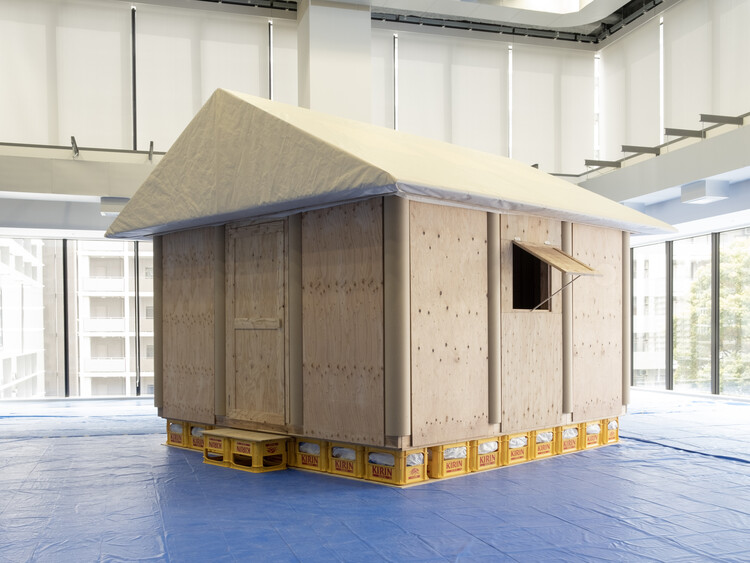Shigeru Ban Reveals Revised Temporary House Prototype In Reaction To The Turkey-Syria Earthquake
Shigeru ban reveals revised temporary house prototype. Shigeru Ban, a Japanese architect known for his humanitarian works, has recently unveiled an updated prototype for temporary housing in response to the Turkey-Syria earthquake.
Author:George EvansApr 05, 20232.3K Shares154.7K Views

Shigeru ban reveals revised temporary house prototype. Shigeru Ban, a Japanese architect known for his humanitarian works, has recently unveiled an updated prototype for temporary housing in response to the Turkey-Syria earthquake.
The prototype is a result of collaboration between Ban's office and the UNHCR, aiming to provide safe and comfortable temporary housing for those who lost their homes in the disaster.
The Turkey-Syria earthquake, which occurred on October 30, 2020, measured 7.0 on the Richter scale and had a devastating impact on the region. The earthquake caused severe damage to buildings and infrastructure, leaving many people homeless and vulnerable to further disasters such as harsh winter conditions.
In response to the crisis, Shigeru Ban's office quickly began working on a prototype for temporary housing, building on the architect's extensive experience in designing disaster relief shelters.
Shigeru Ban Reveals Revised Temporary House Prototype In Reaction To The Turkey-Syria Earthquake
The updated prototype unveiled by Ban is an improvement on the earlier model, taking into account feedback from refugees and local authorities.
The new design features a larger living space with a separate sleeping area, a kitchenette, and a bathroom. The house also has a small porch and a garden, creating a sense of home and community for those who are displaced.
The design is based on Ban's signature cardboard tube structure, which is both lightweight and durable. The walls are made of cardboard tubes filled with insulation, while the roof is made of polycarbonate sheets.
The materials used are affordable, easy to transport and assemble, and recyclable, making the prototype sustainable and environmentally friendly.
One of the most significant features of the updated prototype is its flexibility. The design can be easily modified to fit the needs of different communities and regions, taking into account factors such as climate, culture, and local materials. This flexibility allows for a more tailored approach to disaster relief, ensuring that the temporary housing provided is both functional and culturally appropriate.
The prototype also incorporates sustainable energy solutions, including a solar panel system that provides power for lighting and appliances. The system is designed to be easily installed and maintained, ensuring that the houses have access to electricity even in remote locations.
Shigeru Ban's commitment to humanitarian architecture has earned him numerous awards and accolades, including the Pritzker Architecture Prize, the highest honor in the field of architecture. His work has had a significant impact on the lives of refugees and disaster victims around the world, providing them with safe and comfortable spaces to rebuild their lives.
The design's flexibility, affordability, and environmental sustainability make it a model for disaster relief housing that can be replicated in other regions facing similar challenges. Ban's humanitarian architecture serves as an inspiration for architects and designers around the world, reminding us of the power of design to create positive change in the world.
Shigeru Ban's humanitarian work has been focused on providing housing for people affected by disasters and conflicts. His innovative designs have been used to provide shelter for refugees in Rwanda, earthquake victims in Nepal, and tsunami victims in Japan.
His approach to designing temporary housing is based on the belief that people should be able to live in safe and comfortable spaces, regardless of their circumstances.
Final Words
The updated prototype for temporary housing designed by Shigeru Ban and his team is an innovative and sustainable solution to the housing crisis caused by the Turkey-Syria earthquake.

George Evans
Author
George Anderson, an exceptional architectural designer, envisions and brings to life structures that transcend the realm of imagination. With an unwavering passion for design and an innate eye for detail, George seamlessly blends form and function, creating immersive spaces that inspire awe.
Driven by a deep appreciation for the interplay of space, light, and materials, George's innovative approach redefines the possibilities of architectural design. His visionary compositions leave an indelible mark, evoking a sense of wonder and transforming the built environment.
George Anderson's transformative designs and unwavering dedication continue to shape the architectural landscape, pushing the boundaries of what is possible and inspiring generations to come.
Latest Articles
Popular Articles
